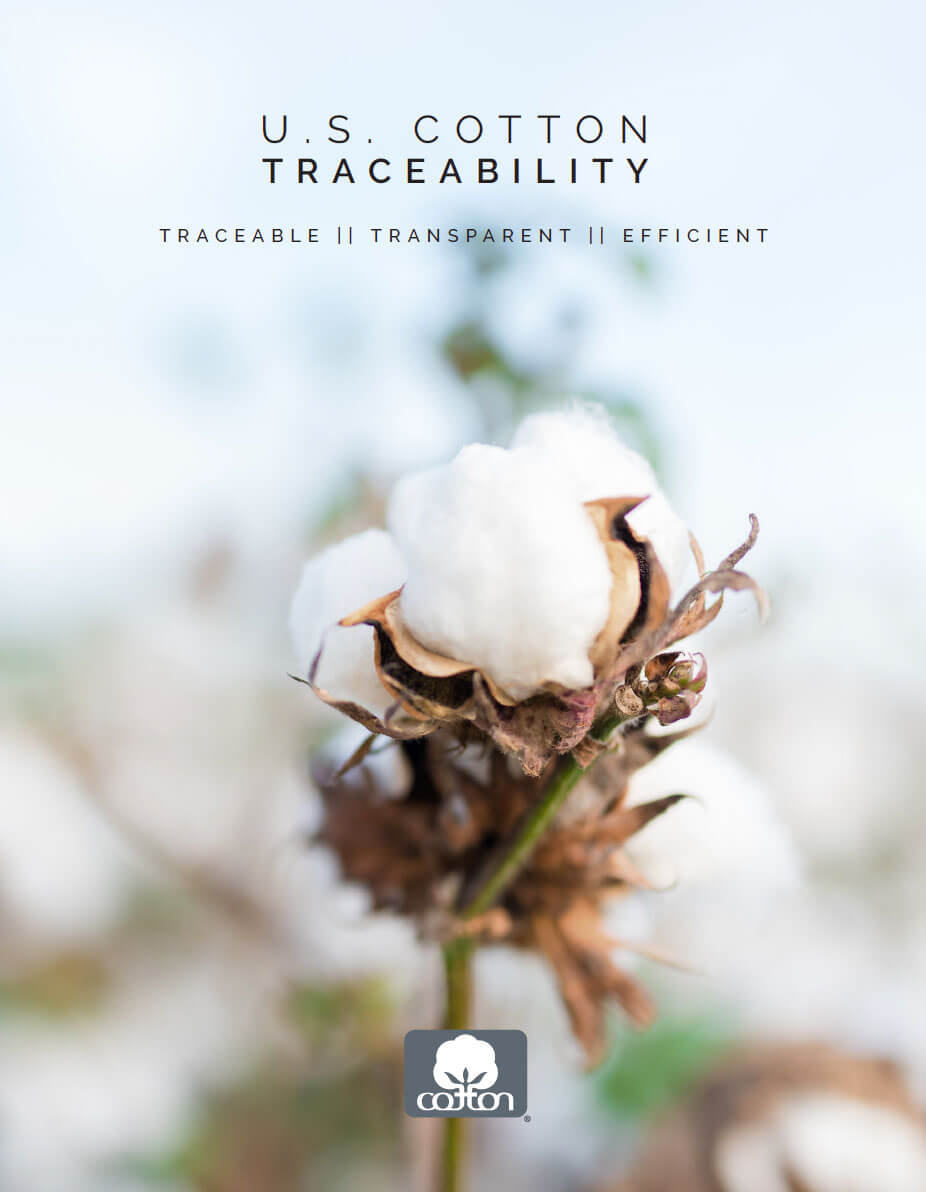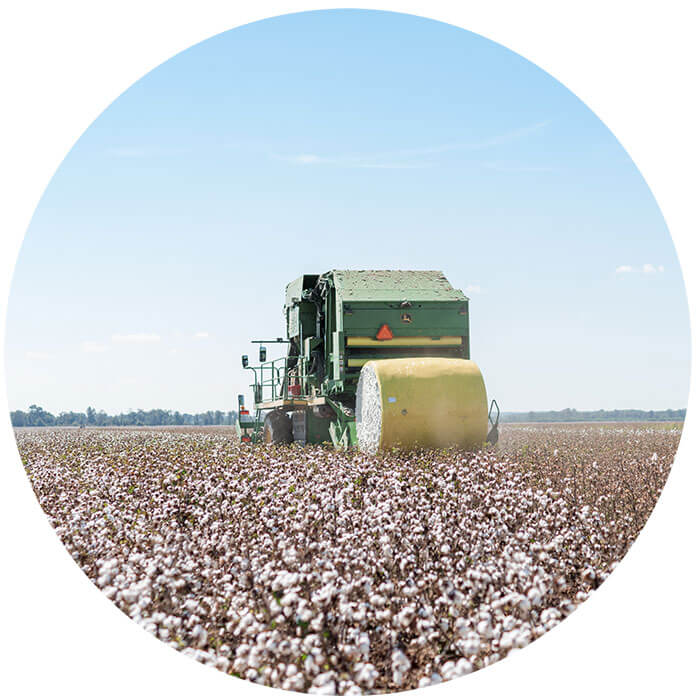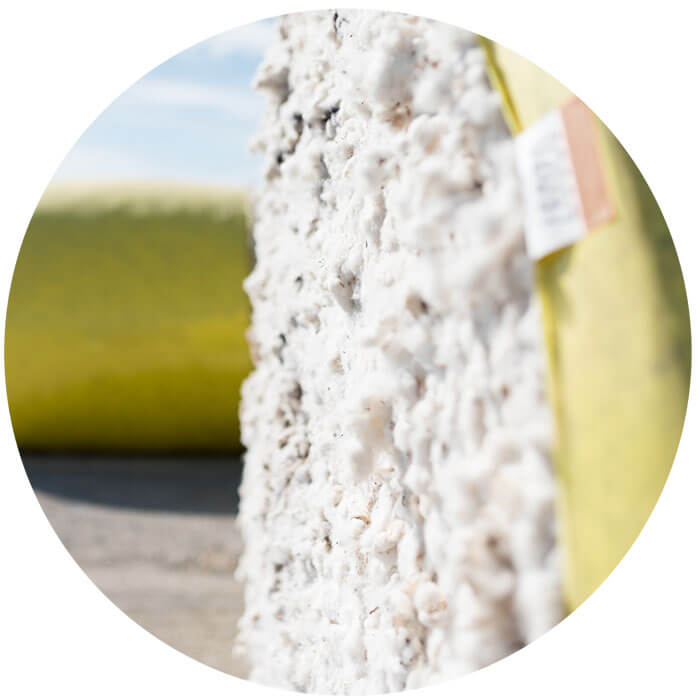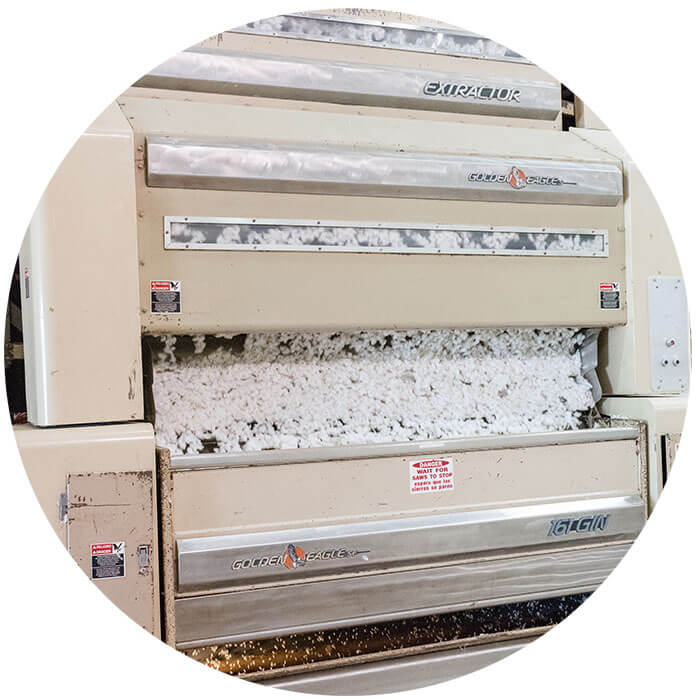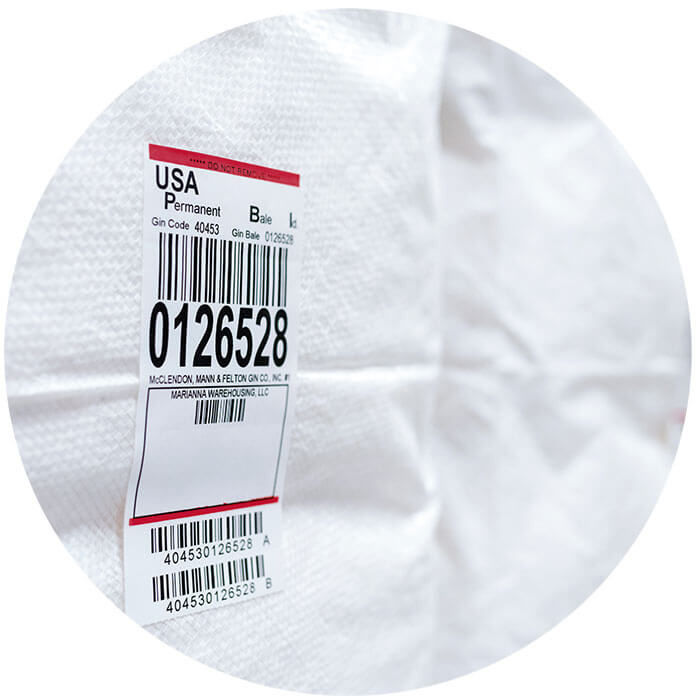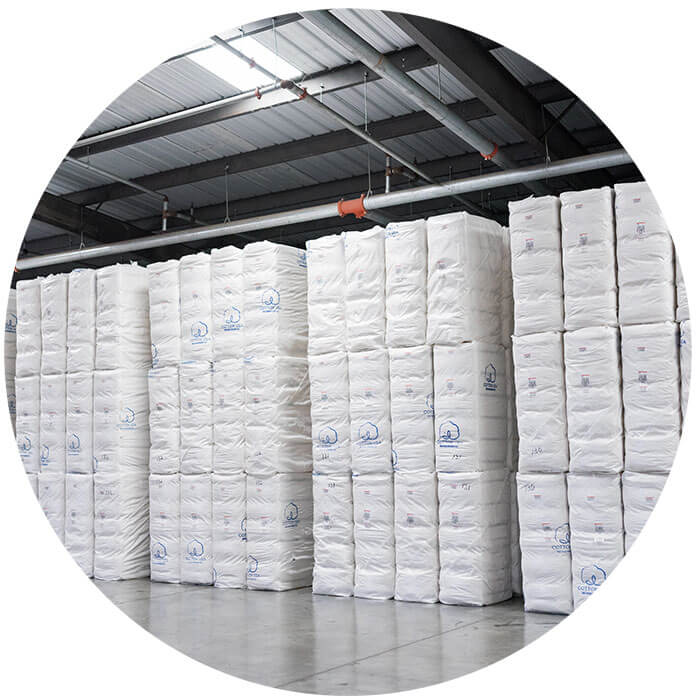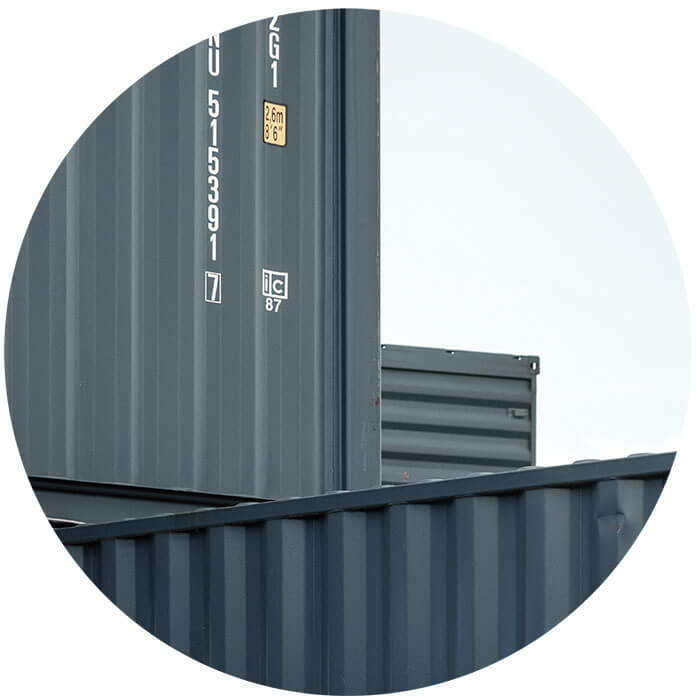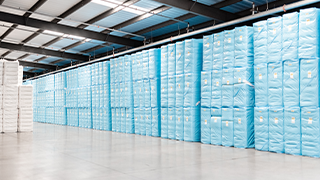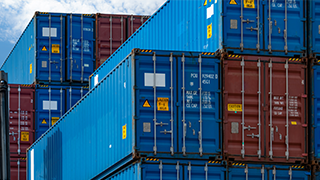U.S. Cotton Traceability
Leading the Way in Traceable Cotton Production
The United States is leading the way in traceable cotton production. Implementation of research and technology at every stage enhances fiber properties and minimizes the environmental footprint of U.S. cotton. Federal agencies such as the EPA, FDA, and OSHA ensure that cotton is produced in a regulated and reported manner, including publicly available data for on-field inputs.*
The USDA Agricultural Marketing Service uses Permanent Bale Identification to identify U.S. cotton along the supply chain. Throughout the Cotton Belt, from the gin to the mill, U.S. cotton is traceable, transparent, and efficient.
*U.S. Environmental Protection Agency (EPA), U.S. Food and Drug Administration (FDA), Occupational Safety and Health Administration (OSHA), U.S. Department of Agriculture (USDA)
U.S. Cotton Belt
- Alabama
- Arkansas
- Arizona
- California
- Florida
- Georgia
- Kansas
- Louisiana
- Mississippi
- Missouri
- New Mexico
- North Carolina
- Oklahoma
- South Carolina
- Tennessee
- Texas
- Virginia
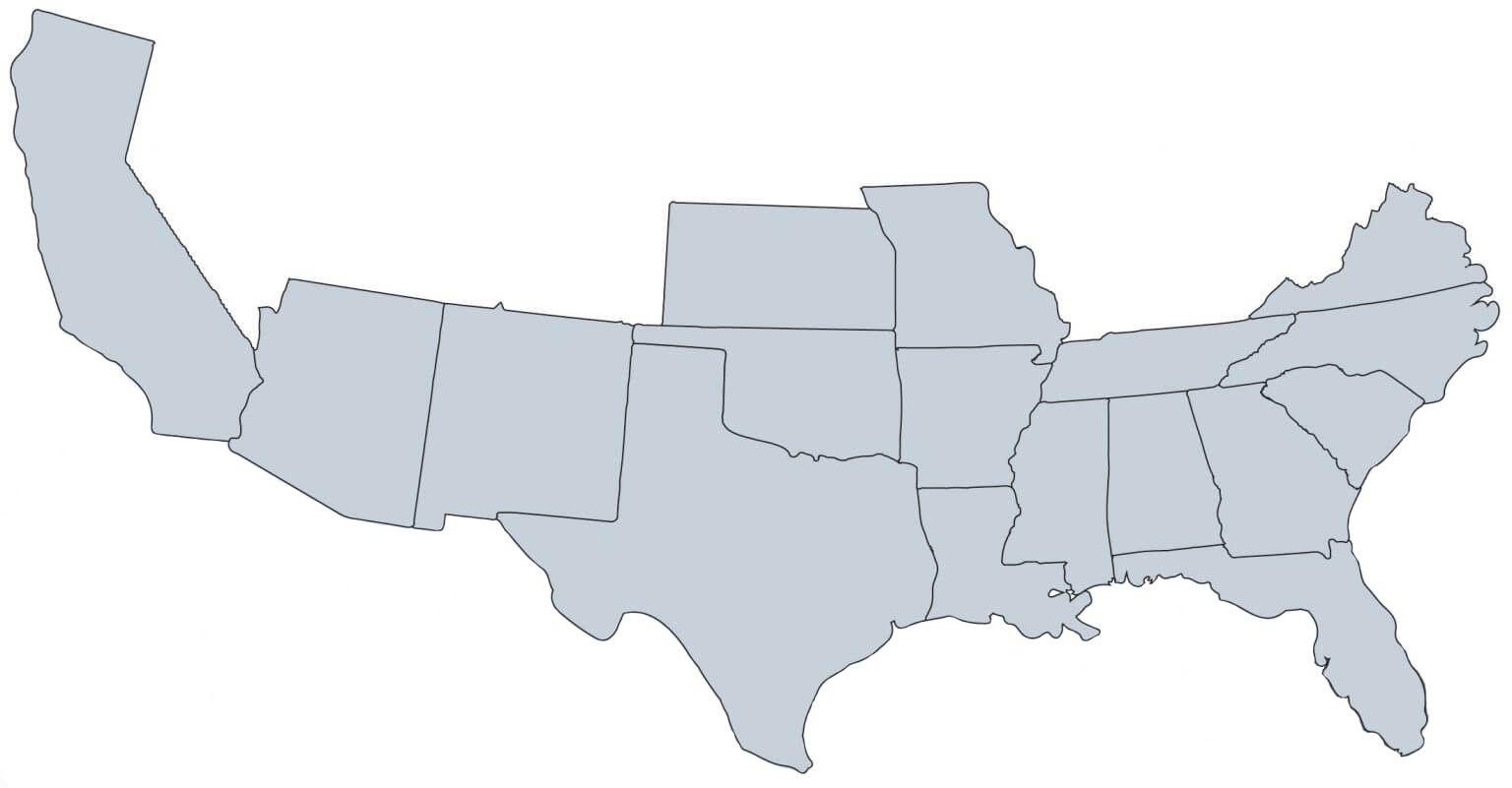
Cotton Production Process
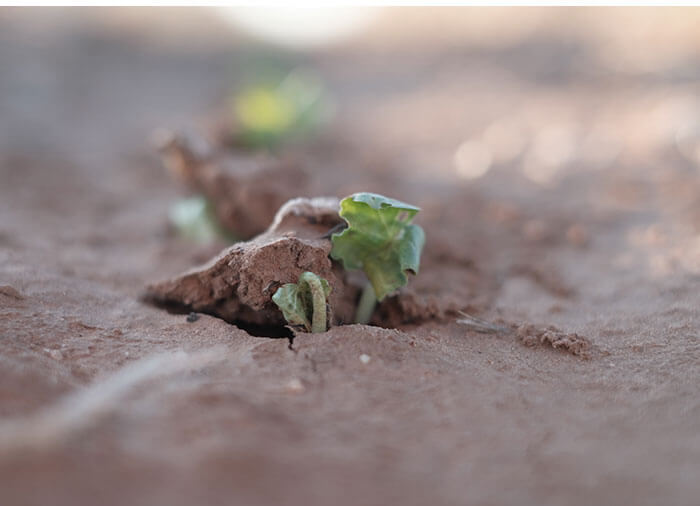
Planting & Growing
Farmers select seed varieties based on location, yield, and desired fiber properties. This is where the traceable journey begins. Farmers know the variety, seed amount, and acreage they plant. Cotton is typically planted in the spring and harvested in the fall.
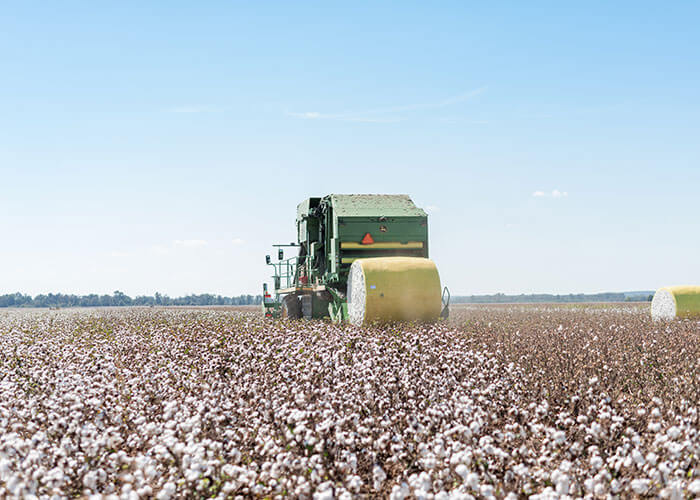
Harvesting
Once the cotton boll matures, the seed cotton, which is cotton lint that is still attached to the seed, is harvested from the plant. Farmers wait for the boll to reach optimal maturity to maximize yield and fiber quality. In the U.S., cotton is harvested mechanically. Farmers utilize sophisticated cotton pickers that contain GPS equipment and software to track harvest location and yield.
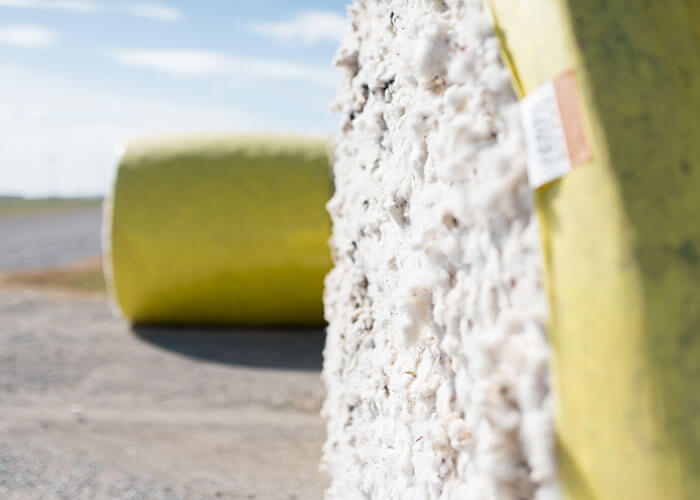
Module
The harvested seed cotton is formed into modules on the cotton field and later transported to the gin. Modules can be large rectangular units or round units. Each module is labeled with an identification number that links it directly to the farm. Round modules are formed aboard newer cotton harvest systems and have RFID tags embedded in the wrapping material. Modules are covered to protect them from the weather elements in the field until ready to be transported to the cotton gin yard.
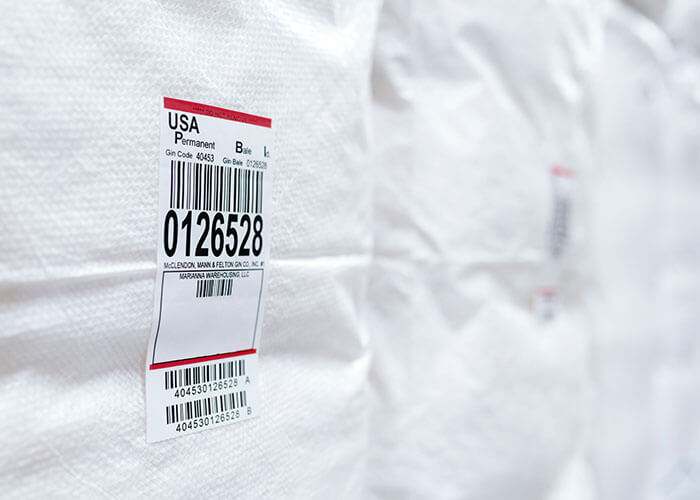
Gin
The cotton modules arrive at the gin. Prior to processing, each module identification number is logged into a database. Cotton gins process cotton from many farms, so the identification number is needed to link the module and the bales to the producing farm. After ginning, each bale is labeled with a Permanent Bale Identification (PBI) tag consisting of a twelve-digit number and barcode, which identifies the classing office, gin, and bale. A sample consisting of cotton taken from each side of the bale is collected and identified with a PBI tag from the bale. The sample is sent to the USDA classing office.
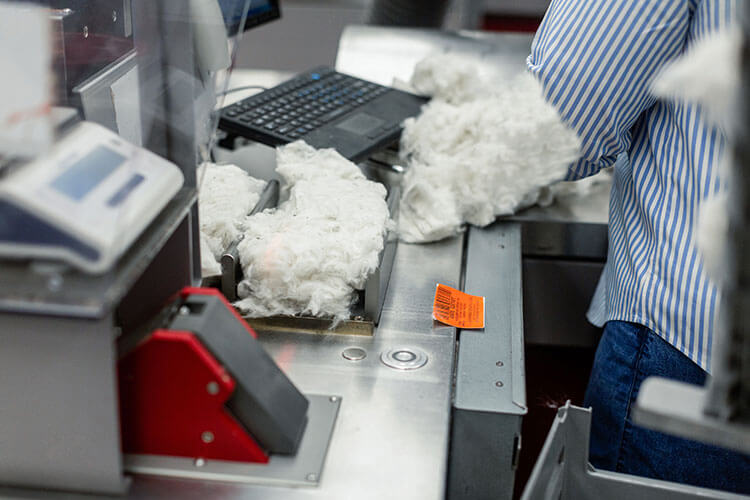
Classing
The USDA classes U.S. cotton with a High Volume Instrument (HVI®). The measured fiber properties include length, strength, length uniformity, micronaire, color, and trash. The USDA operates ten classing offices along the Cotton Belt. Bale samples arrive at the classing office. After conditioning, the PBI sample tag is scanned and the cotton is tested on an HVI unit. A classer manually examines the sample for the presence of any extraneous matter (bark, grass, etc.). Cotton quality data from the sample are now linked to the bale and stored in the USDA National Database.
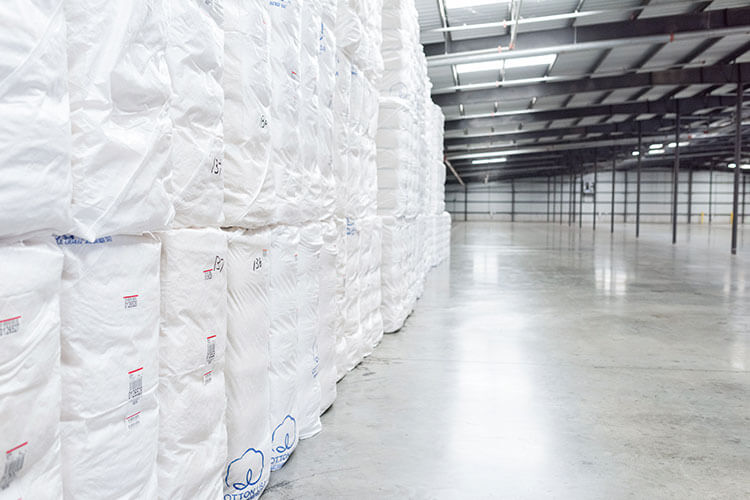
Warehouse
After ginning, cotton bales labeled with PBI tags are warehoused and ready for purchase. Cotton purchases are typically managed by merchants and co-ops. Once purchased, cotton bales are released and shipped to spinning mills.
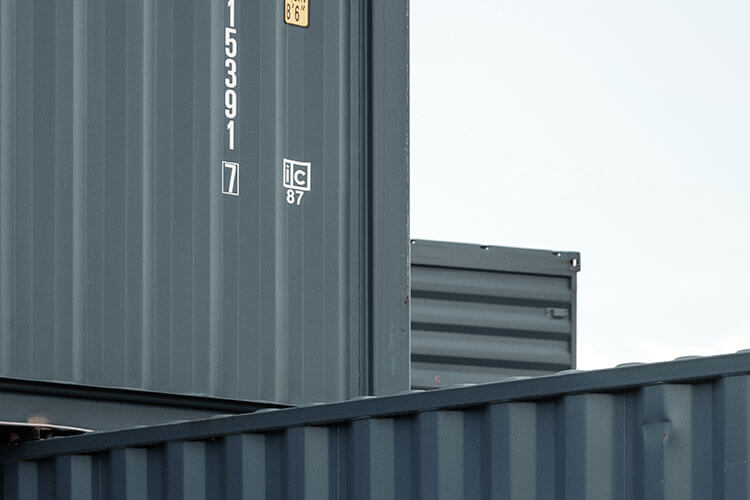
Shipping
The U.S. is the leading exporter of cotton, exporting roughly 75% of the crop to over 35 countries around the world. Most often, orders are placed by the spinning mill through a merchant or grower-owned cooperative. Cotton contracts are written based on fiber properties dictated by the desired quality of the end product. Purchased bales are loaded onto trucks or railcars to be transported to the port of call where they are transferred to containers for shipping around the globe.

Spinning Mill
Upon arrival, the spinning mill warehouses bales by similar fiber properties. Fiber quality data are often sent electronically to the mill by the merchant or can be accessed by the PBI number in the USDA National Database. Bales are strategically placed in laydowns and spun into yarn. Cotton Incorporated’s Engineered Fiber Selection™ (EFS™) System can assist with cotton inventory management and optimize laydown quality and yarn consistency. With the PBI number and the EFS system, mills have the tools to trace U.S. cotton from the gin through the laydown opening line.
